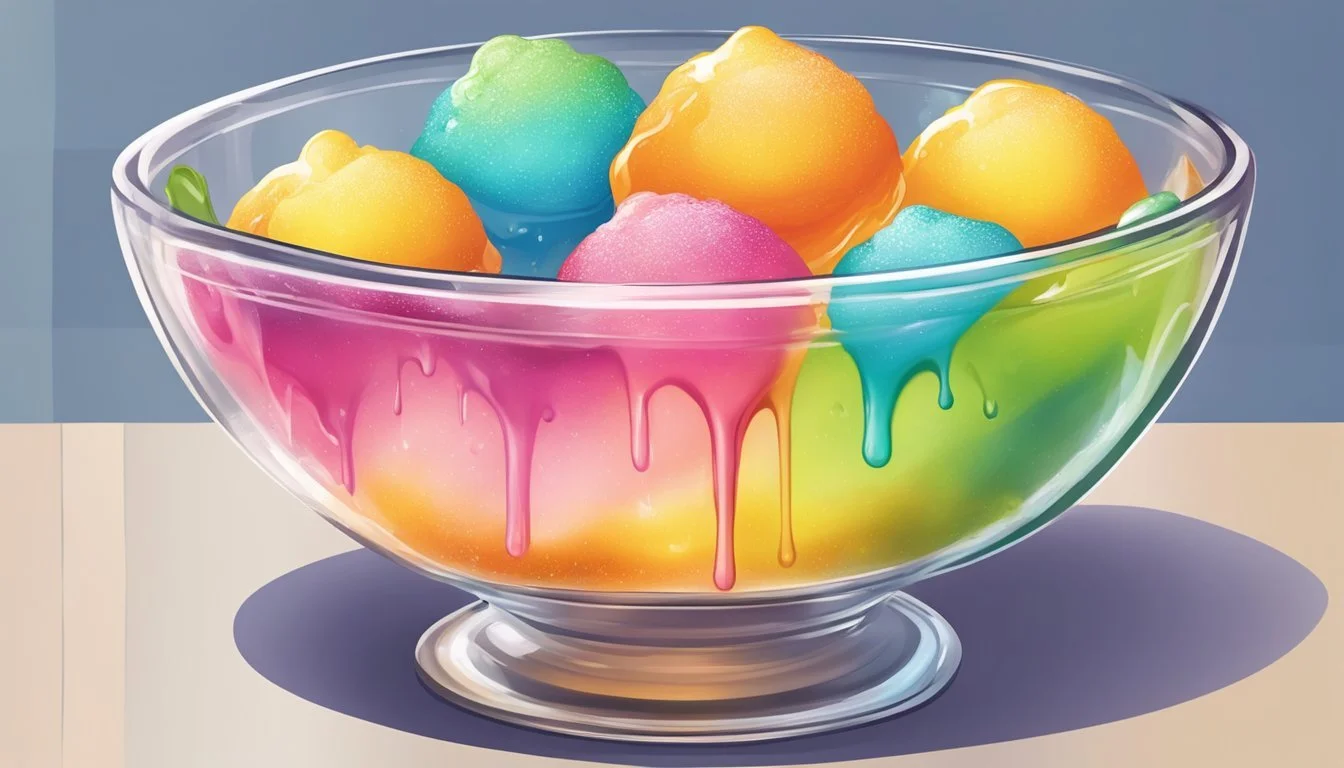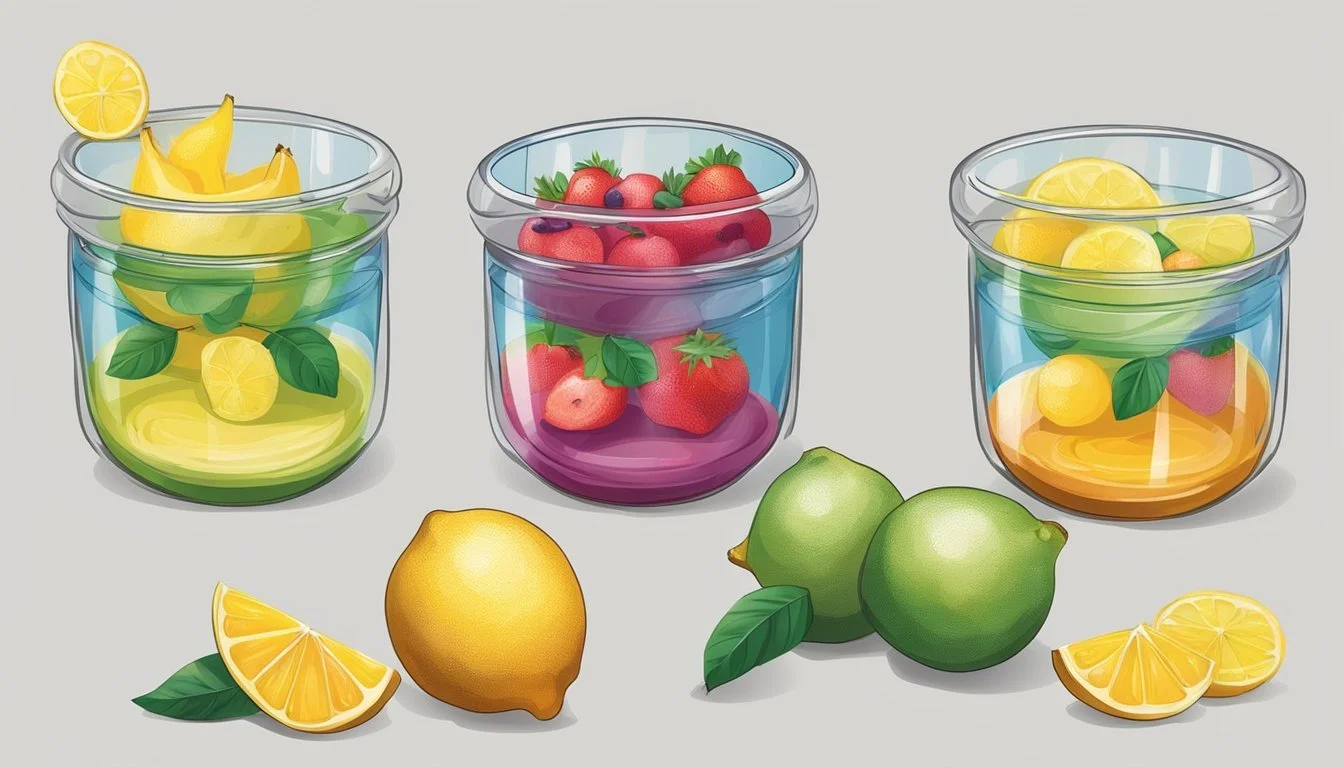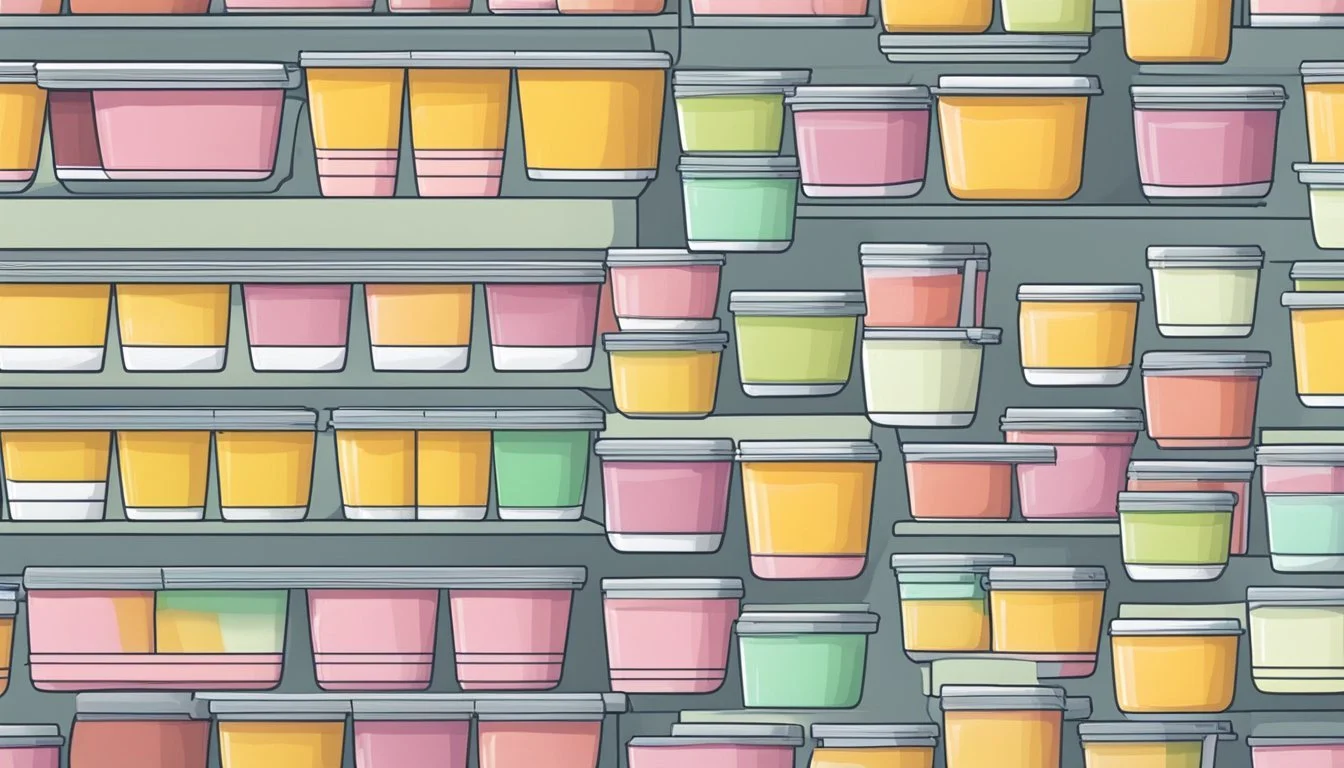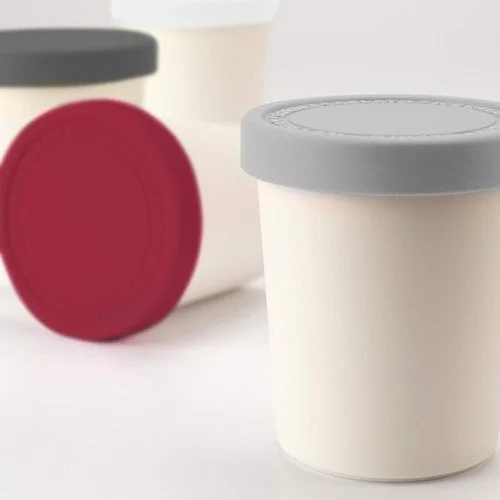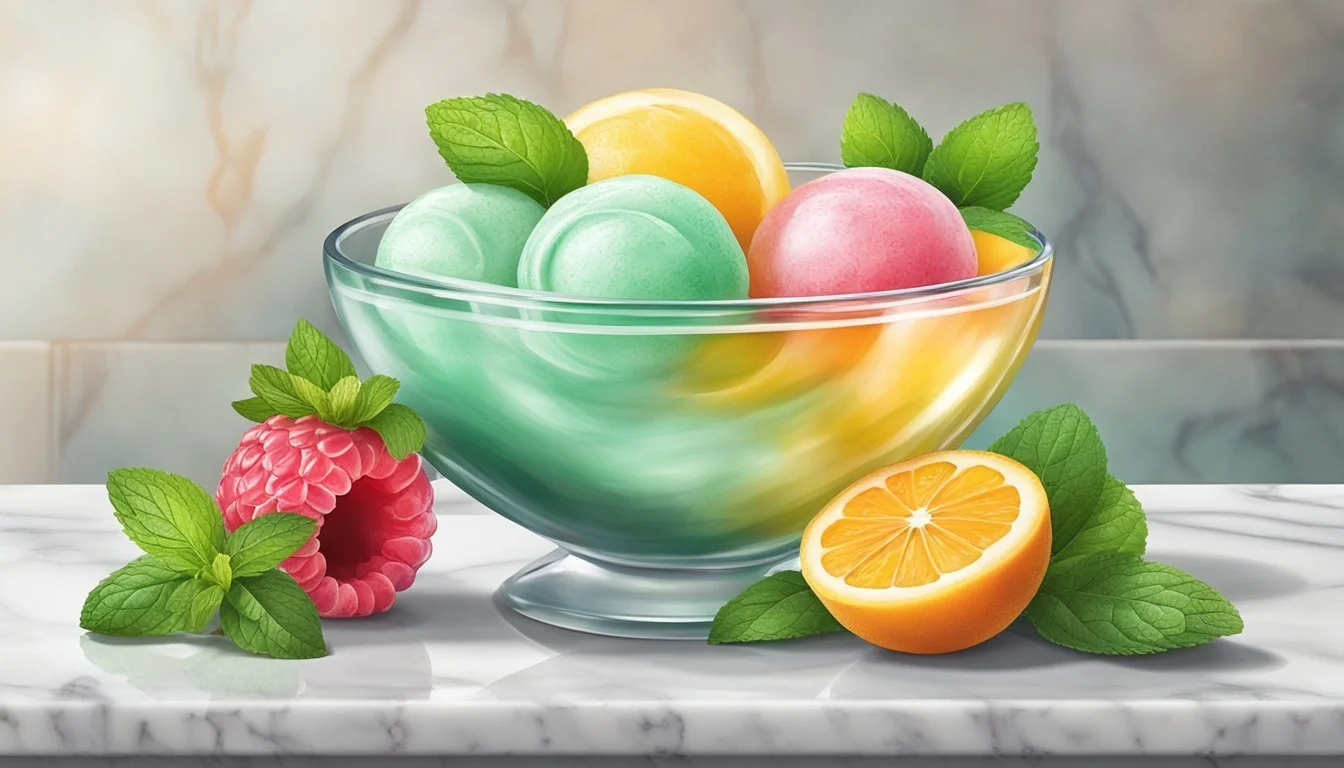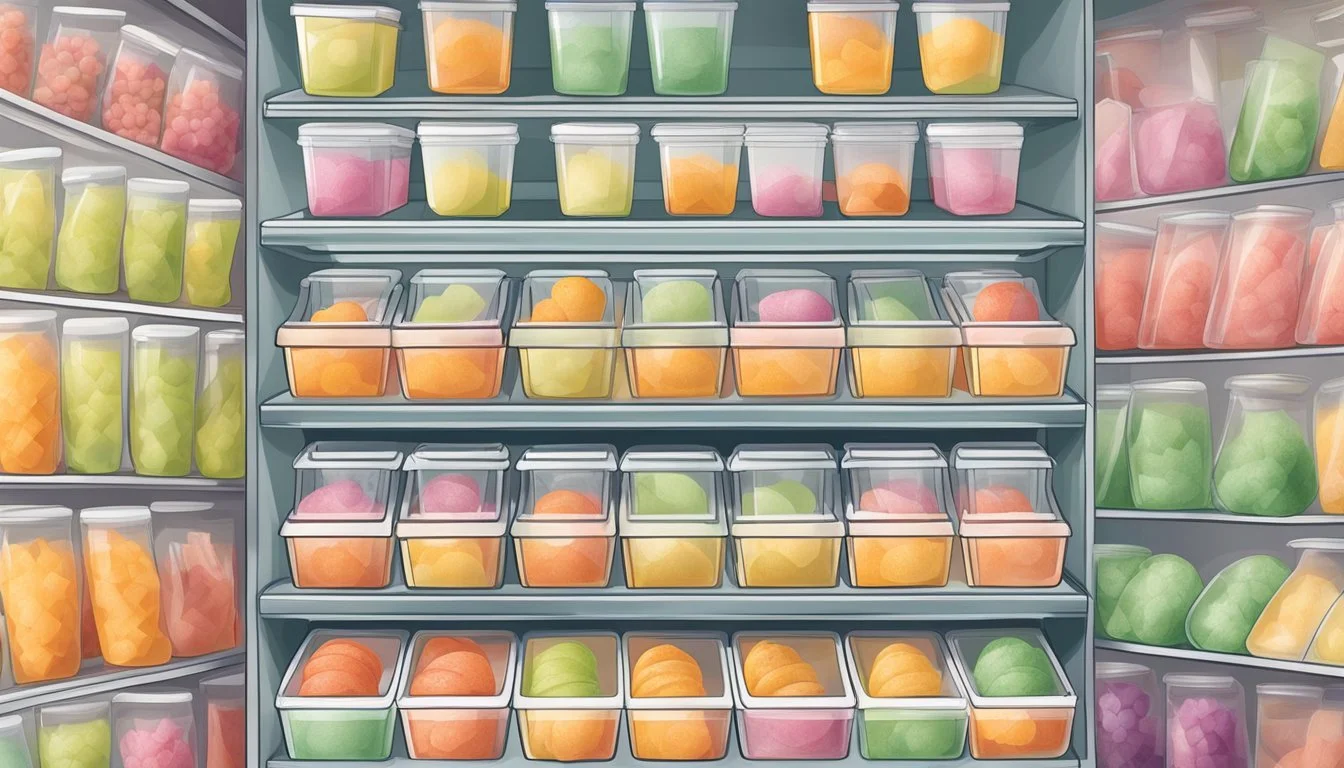How Long Does Sorbet Last?
Shelf Life and Storage Tips
Sorbet, the refreshing frozen dessert made from fruit puree and sugar, is enjoyed for its vivid flavors and smooth texture. The shelf life of sorbet is a topic of interest for both home cooks and dessert enthusiasts. In general, the longevity of sorbet depends on several factors, including the sugar content, storage conditions, and whether the sorbet is homemade or commercially produced.
Proper storage plays a crucial role in how long sorbet can last. When stored correctly in a freezer at a constant 0°F (-18°C), unopened frozen sorbet will maintain its best quality for about 6 to 8 months. Once opened, sorbet should be kept in an airtight container to prevent freezer burn and can last for up to six months without significant loss of flavor or texture.
The shelf life of sorbet mix, which refers to the unfrozen base, differs from that of its frozen counterpart. Typically, if refrigerated, the sorbet mix can remain fresh for up to 48 hours. After the sorbet mix is churned and frozen, it's advisable to consume it within a month to fully enjoy the intended quality of the dessert.
Understanding Sorbet
Sorbet is a refreshing frozen dessert beloved for its intense flavor and smooth texture. This section will clarify its definition, composition, and how it stands apart from similar desserts.
Definition and Composition
Sorbet is a dairy-free frozen dessert made primarily from sugar, water, and fruit purée or juice. It often appeals to those seeking a vegan or lactose-free option. The basic ratio frequently used is four cups of fruit purée to one cup of sugar, although this can vary based on the sweetness of the fruit used.
The primary ingredients of sorbet are:
Fruit (pureed or juiced)
Sugar (to taste and to aid in consistency)
Water (to adjust texture)
Unlike ice cream or gelato, sorbet contains no dairy or eggs, distinguishing it as a lighter and often fruitier option among frozen desserts.
Differences Between Sorbet and Related Desserts
Sorbet holds a unique position in the frozen dessert category with its simple and dairy-free composition setting it apart from others like ice cream, sherbet, gelato, and frozen yogurt.
Dessert Dairy Content Main Ingredients Texture Sorbet Dairy-free Fruit, sugar, water Light and smooth Ice Cream Contains dairy Cream, sugar, flavor Creamy and rich Sherbet Low dairy Fruit, sugar, cream Lighter than ice cream, but creamier than sorbet Gelato Contains dairy Milk, sugar, flavor Dense and smooth Frozen Yogurt Contains dairy Cultured milk, sugar, flavor Tart and creamy
Sorbet's lack of dairy means it is fat-free, a characteristic that gives it a unique, icy consistency that differs significantly from the smooth, creamy texture provided by the milk fat found in ice cream and gelato. Sherbet, while sometimes confused with sorbet, includes a small amount of cream or milk products, giving it a creamier texture than sorbet but less so than ice cream. Meanwhile, frozen yogurt includes cultured milk, setting it apart with a signature tangy flavor.
Making Sorbet at Home
When making homemade sorbet, one needs the proper tools, the right blend of ingredients, and an understanding of the sorbet making process to ensure a successful and tasty final product.
Required Tools and Equipment
For homemade sorbet, the essential tools include a blender or food processor to purée fruits, and an ice cream maker for churning. In its absence, a freezer and a fork or hand mixer can be employed for manually stirring the sorbet mixture as it freezes to avoid crystallization.
Selecting Ingredients and Recipe
The ideal sorbet recipe calls for a balance of ripe fruit, sweeteners, and, optionally, stabilizers like egg white or gelatin. It’s crucial to consider the sugar content of the chosen fruit, as it affects the sorbet's texture. Ingredients like simple syrup, honey, or sugar are necessary to sweeten, while lemon juice or alcohol can be added to enhance flavor and consistency. Select fruits like raspberry or lemon for a robust flavor profile.
Sorbet Making Process
First, purée the selected fruits using a blender or food processor. Combine this purée with simple syrup and lemon juice to taste. For the sorbet to achieve a smooth texture, the mixture must have a sugar concentration between 20% to 30%. Once the base is prepared, churn it in an ice cream maker or place it in the freezer, stirring periodically until it reaches the desired consistency.
Experience the convenience and savings of buying simple syrup online!
Sorbet Storage Basics
Proper storage conditions and techniques are essential for maintaining the quality and extending the shelf life of sorbet. Ensuring that sorbet is stored in the correct environment prevents texture degradation and flavor loss.
Effective Freezing Techniques
When freezing sorbet, one should follow these fundamental methods:
Quick Freezing: Rapidly freezing sorbet helps prevent the formation of large ice crystals, retaining its smooth texture.
Packaging: Sorbet should be stored in an airtight container to protect it from absorbing other flavors and moisture. Packaging should minimize air exposure.
Avoid the crowds and shop for airtight containers online from the comfort of your home!
Optimal Storage Conditions
The longevity and quality of frozen sorbet are largely influenced by the following storage conditions:
Stable Temperature: Maintaining a constant freezer temperature of 0°F (-18°C) is critical in preserving the sorbet's desired consistency.
Moisture Prevention: Placing a piece of plastic wrap directly on the surface before sealing it with a lid can help to further reduce the introduction of moisture and air.
Location in Freezer: It's recommended to store sorbet in the main part of the freezer rather than the door to avoid temperature fluctuations that can cause thawing and refreezing.
Maintaining Quality and Texture
Sorbet's quality and texture are crucial for an enjoyable experience. Maintaining smoothness while preventing ice crystals ensures the sorbet remains creamy and palatable long after production.
Preventing Ice Crystal Formation
For sorbet to retain its signature texture, the formation of ice crystals must be minimized. Stabilizers such as pectin can be added to the sorbet mix to increase viscosity, which helps in reducing the size and formation rate of ice crystals. A common master ratio used in sorbet making is four parts fruit purée to one part sugar, which not only sweetens but also assists in lowering the freezing point of the mixture.
Stabilizers: Pectin, gelatin, guar gum
Purpose: Increase viscosity to prevent ice crystal growth
Factors Affecting Sorbet Consistency
Several factors influence the consistency of sorbet, which is key to its structure and mouthfeel:
Sugar and Water Balance: Using a refractometer to measure the precise sugar levels ensures the ideal balance for smoothness.
Freezing Process: Rapid freezing leads to smaller ice crystals, thereby improving texture.
Temperature Fluctuations: Keeping frozen sorbet at a steady 0°F (-18°C) is essential as fluctuations can cause ice crystals to grow.
Texture Agents:
Role of sugar: Lower freezing point, prevent ice crystals
Role of stabilizers: Maintain smoothness, add body
Use of corn syrup: Controls ice crystallization effectively
Shelf Life and Consumption
When discussing sorbet, it is essential to consider both how long it can be safely consumed and whether the quality remains acceptable. Storage conditions play a pivotal role, with consistent temperature being a key factor.
Determining Sorbet Shelf Life
Unopened Sorbet:
Shelf Life: Typically, unopened sorbet will maintain peak quality for about 6 to 8 months when kept frozen at 0°F.
Manufacturer's Estimate: Referring to the expiration or safety date provided by the manufacturer can give consumers a relevant timeline.
Opened Sorbet:
Shelf Life: Once opened, sorbet's shelf life reduces. To retain quality, it should be consumed within 2 to 4 months.
Storage Conditions: Properly storing sorbet in an airtight container or a resealable plastic bag helps extend its shelf life.
Safety and Quality Over Time
Safety: Sorbet is safe to eat beyond the peak quality period as long as it has been stored correctly, though the quality may not be ideal.
Quality Decline: After a certain period, usually beyond a month, the texture and flavor of the sorbet can begin to degrade even though it remains safe to consume.
Food Storage Information: It's vital to keep the sorbet at a constant temperature of 0°F and to prevent temperature fluctuations which can contribute to faster quality decline.
By adhering to these guidelines, sorbet enthusiasts can enjoy their frozen dessert while ensuring safety and preserving quality.
Common Issues with Frozen Sorbets
When storing sorbets in the freezer, two primary concerns are preventing freezer burn and identifying spoilage. Correct storage methods help maintain the quality of the sorbet, but one must be vigilant for signs of quality degradation.
Dealing with Freezer Burn
Freezer burn occurs when air reaches the sorbet's surface, causing dehydration and oxidation. The resulting ice crystals form a layer that affects both texture and flavor. To prevent this:
Store sorbet in an airtight container.
Minimize exposure to air by filling the container to the top or using plastic wrap pressed directly onto the surface before sealing.
How to Tell if Sorbet Has Spoiled
Sorbet that has been stored too long or exposed to fluctuating temperatures may spoil. Indicators of spoilage include:
A change in color or a presence of ice crystals, signaling dehydration or freezer burn.
Off smells or flavors suggesting that the sorbet should be discarded.
Spoilage often coincides with sorbet having been refrozen after thawing, which can alter its safety and quality. Always check for signs of spoilage before consuming.
Enhancing Sorbet Experience
The pleasure derived from enjoying sorbet is not merely in its refreshing taste but also in the way it is served and the ingenuity behind its variations. A thoughtful presentation and a twist in the recipe can transcend the basic sorbet experience, especially during the warm summer months.
Serving Suggestions and Pairings
Sorbet can be a delight to the senses when served with a keen eye on flavor pairings. Lemon sorbet, for example, pairs exquisitely with fresh mint leaves or a splash of vodka for an adult twist on a hot summer day. A tableau of various sorbets arranged by color—vibrant raspberry, citrusy orange, and sweet peach—can brighten any summer gathering. The consumption of sorbet is not confined to being a palate cleanser; it can be harmoniously buddied with fresh fruits or even a drizzle of complementary fruit coulis to accentuate its rich fruit flavors. Here are some specific pairings that elevate the experience:
Lemon Sorbet: pair with fresh berries or mint
Raspberry Sorbet: drizzle with dark chocolate sauce
Orange Sorbet: serve with a basil syrup or caramelized orange zest
Creative Variations and Ideas
Introducing creative ideas to homemade sorbet recipes results in delightful surprises. Utilizing a peach sorbet recipe as a foundation, it's possible to infuse it with fresh herbs like basil or thyme to create a complex flavor profile. Experimenting with layering flavors, like a raspberry sorbet with a hint of rose water, provides a nuanced taste experience. Convert traditional recipes into a freeze-and-slice terrine for an elegant dessert option on a summer table. Consider the following ideas for inventive twists:
Peach Sorbet: add basil or thyme during the mixing process.
Raspberry Sorbet: layer with rose water to introduce a floral note.
Homemade Sorbet: try making a terrine for a sophisticated presentation.
For those looking to add a spirited kick, a scoop of sorbet can be added to sparkling wine, creating a decadent and effervescent dessert drink. Each variation and serving idea aims to cater to the summertime quest for cooling indulgence while maintaining the simple elegance of sorbet.
Health and Nutrition Aspects
Sorbet is a frozen dessert that is valued for its fruit content and often seen as a healthier alternative to other frozen treats. It is typically dairy-free and vegan, making it suitable for those with specific dietary restrictions. This section explores the caloric and nutritional profile of sorbet and discusses alternatives for those seeking healthier options.
Caloric and Nutritional Information
Sorbet mainly consists of water, sugar, and fruit puree which provides its characteristic flavor and texture. Vitamin C is one notable micronutrient found in fruit-based sorbets, the concentration of which depends on the type and amount of fruit used. Unlike ice cream and gelato, sorbet does not contain milk or cream, which reduces its calorie and fat content. However, it is important to note that sorbet can have a high sugar content, which contributes to its total caloric value.
Here is a general nutritional breakdown of sorbet:
Calories: Ranges from 100 to 150 kcal per serving (1/2 cup)
Sugar: Approximately 20 to 30 grams per serving
Fat: 0 to 0.5 grams per serving
Fiber: Minimal, unless it contains pieces of whole fruit
Because it lacks dairy, sorbet contains no cholesterol and is low in saturated fat. However, it should be consumed in moderation due to its sugar content.
Choosing Healthier Alternatives
For those seeking healthier sorbet options, there are ways to reduce sugar intake while still enjoying this frozen dessert:
Opt for sorbets sweetened with honey or maple syrup instead of refined sugars.
Look for brands or recipes that use a higher proportion of whole fruit to increase the fiber content.
Consider homemade sorbet recipes where the sugar level can be adjusted to personal preference.
Certain sorbets might incorporate yogurt, which can add a creamy texture and provide additional calcium and protein.
Sorbet can be a refreshing treat and part of a balanced diet if chosen wisely and consumed in moderation.
Troubleshooting and Tips
In ensuring the longevity and quality of sorbet, one may encounter a few common issues. Proper techniques and a few professional tips can help maintain the sorbet's ideal texture and flavor.
Common Homemade Sorbet Problems
Sorbet can sometimes become icy or icier than desired, which detracts from the desired creamy texture. This often occurs due to improper sugar balance. A simple syrup base can mitigate this issue, as the syrup, made from dissolved sugar in water, helps prevent the formation of large ice crystals. Another frequent problem is sorbet becoming too hard, making it challenging to serve. To address this, they can add a small amount of alcohol to the recipe, as alcohol lowers the freezing point and softens the sorbet.
Professional Tips for Perfect Sorbet
Professionals often aim for a creamier sorbet by carefully balancing the sweetness and the freezing process. They ensure that sweeteners – whether sugar, honey, or other alternatives – are measured accurately according to the recipe. They may also use invert sugars, which contribute to a smoother texture. Heat also plays a critical role; professionals often heat the sorbet base before chilling it, to ensure that sugars are fully dissolved. Lastly, one must always store sorbet at a consistent 0°F (-18°C) to prevent it from becoming spoiled or altered in texture.
Packing and Storage
In order to maximize the shelf life of sorbet, it's important to focus on both proper packaging and the best practices for storage.
Proper Sorbet Packaging for Freezing
Proper packaging is crucial to extend the shelf life of sorbet after opening. Sorbet should be stored in an airtight container to prevent freezer burn and the absorption of odors from the freezer. Plastic wrap can be pressed directly onto the surface of the sorbet before sealing the container to prevent ice crystal formation. Additionally, placing a layer of parchment paper on the surface before wrapping can further safeguard against moisture loss.
Make your life easier by ordering parchment paper online; it's just a few clicks away!
Best Practices for Sorbet Storage
Sorbet storage practices directly influence its quality and longevity. To ensure the best quality, sorbet should be kept at a constant temperature of 0°F. This can be achieved by placing the sorbet in the back of the freezer where temperature fluctuation is minimal. Refrigerators with a frost-free function are preferable, as they maintain a more consistent temperature. Sorbet should never be refrozen after thawing, as this can compromise its texture and flavor.

